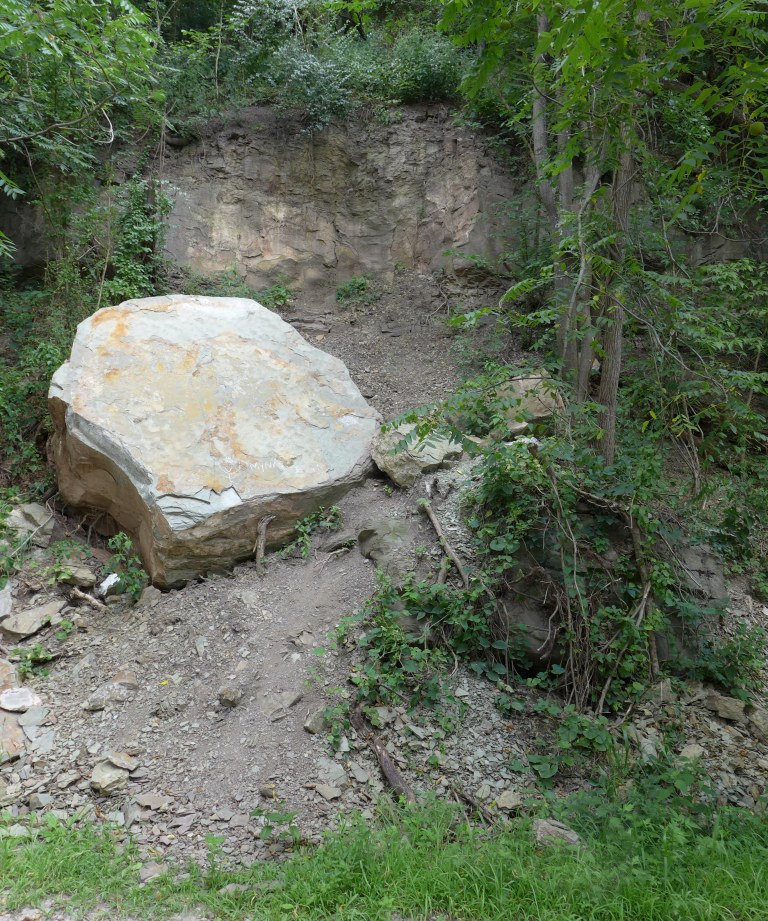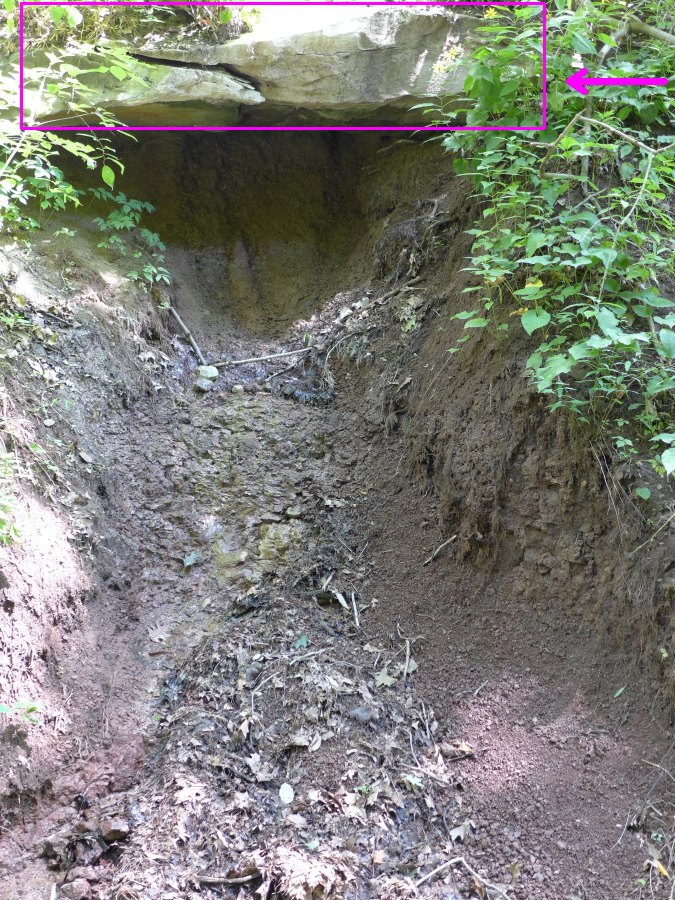31 July 2019
After heavy rains or a spring thaw in Pittsburgh we inevitably see devastating landslides on the news. Why does Pittsburgh have so many landslides and why are they associated with rain or moisture?
The problem is a combination of a particular bedrock and our steep hillsides. Where both are present the location is landslide prone, as shown on the City of Pittsburgh map below. You can see for yourself at the Allegheny County interactive landslide map.

The house in the video above was inside a landslide zone on Semicir Street overlooking Riverview Park. Add water and the house fell down the hill!
The bedrock at fault is Pittsburgh redbed, a claystone that disintegrates into smaller and smaller pieces if exposed to pressure when it’s wet. Redbed is usually under pressure because it’s underneath solid rock and overlying soil. Add water to a steep slope and you have a landslide.
This sandstone boulder on the Bridle Trail in Schenley Park was part of the escarpment above it until the redbed layer beneath it gave way.

Here’s a future landslide on the Lower Panther Hollow Trail. This sandstone boulder, high above my head, will fall some day because the slow drip of water over the boulder has disintegrated the underlying redbed. Notice the reddish crumbled stones.

I had read that Pittsburgh redbed disintegrates when wet but I wanted to see for myself so I gathered some redbed rocks and ran an experiment.
Thousands of years ago these small crumbles were a much bigger solid rock but water had already acted on them. Will the crumbles disintegrate in the presence of water and pressure? I kept some rocks dry and soaked others for a day. Here’s my experiment.
Add water and pressure to Pittsburgh redbed claystone and … Watch Out Below!
p.s. For a really spectacular landslide, check out what happened to Route 30 in East Pittsburgh in April 2018.
(photos and redbed experiment by Kate St. John, house collapse video embedded from WTAE Pittsburgh on YouTube, map from Pittsburgh GIS Data)
Interesting! Like the experiment!